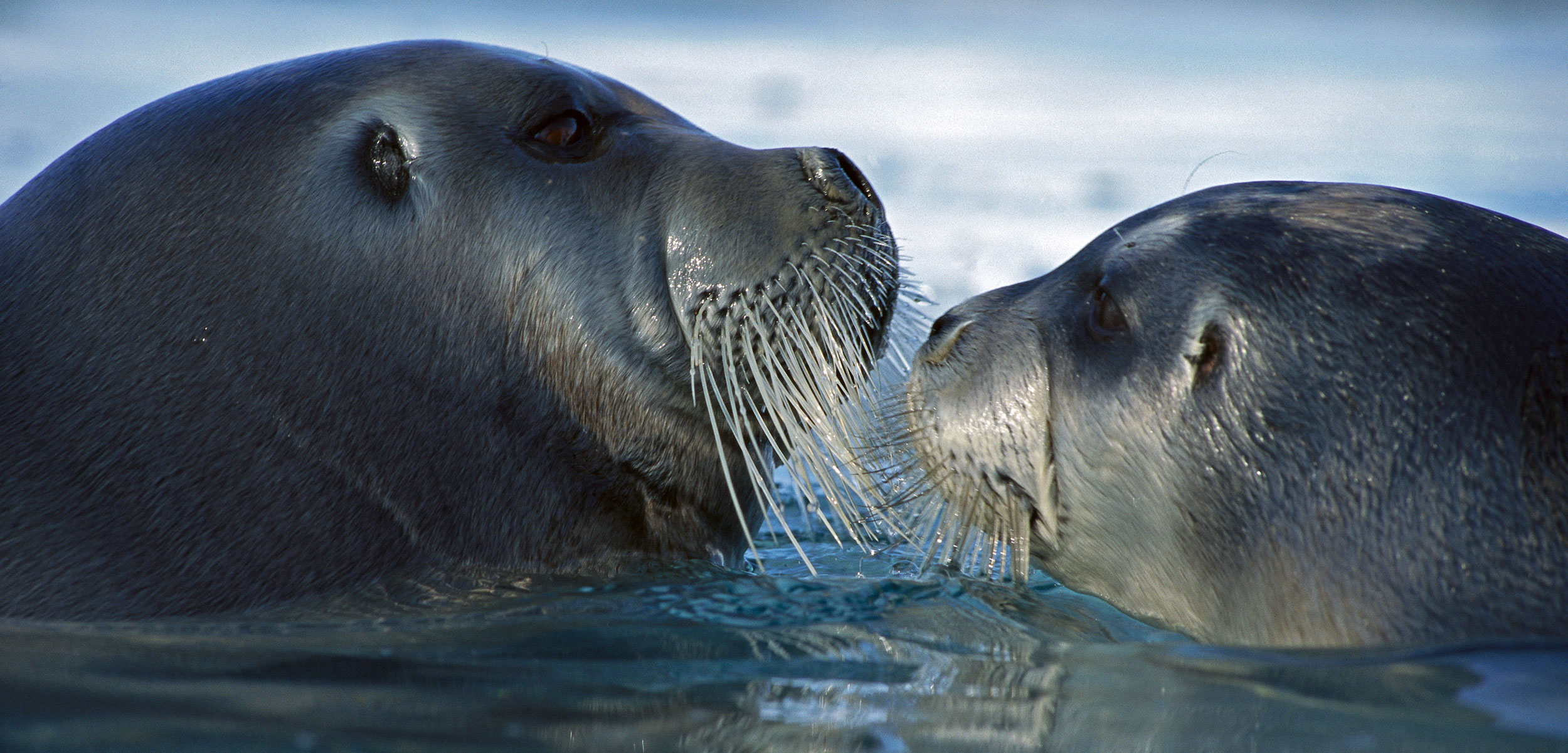Bearded Seals Are Maturing Younger and Having More Pups
Both are signs of a healthy population—but scientists caution these Arctic animals are no champions of climate change resilience.
Article body copy
With their manicured mustaches, bearded seals may be among the hippest pinnipeds by human standards. And in the face of climate change, the species’ females are setting an unexpected trend: they’re having more babies.
A collaborative project between Indigenous Alaskan hunters in villages across the Bering, Beaufort, and Chukchi Seas, and scientists with the state’s Department of Fish and Game found that the pregnancy rate in bearded seals is on the rise. What’s more, the animals also seem to be maturing at a younger age. In the 1960s, bearded seals were reaching sexual maturity at around four years old. Now, they’re hitting puberty at age two and a half.
Whether bearded seals elsewhere in the world are experiencing a similar baby boom remains a mystery. The Arctic seals evolved alongside polar bears and other large predators, so keeping out of sight is one of their most important survival tools. Elusive behaviors, however, also mean the animals remain little studied across much of their range.
“Our collaborations with native subsistence hunters are invaluable,” says Anna Bryan, who led the research and presented the preliminary findings at the Alaska Marine Science Symposium in January.
“People in coastal villages have this continuity of observation and understanding that’s really crucial for Arctic species,” adds Peter Boveng, a marine biologist at the US National Oceanic and Atmospheric Administration’s Alaska Fisheries Science Center, who was not involved in the analysis.
The changes in age of maturation and pregnancy rate point to a healthy, growing population—good news for a species that relies on sea ice to pup, rest, and molt. “Seal blubber thickness has also increased,” says Bryan. “[The seals] are getting enough nutrition to grow quickly.”
On the surface, these new findings appear inconsistent with the predicted negative effects of climate change on Arctic seal populations. Bryan and her team noted a similar improvement in the population health of ringed seals, which raise their pups in snowdrift burrows. But scientists caution against the urge to give the animals the all-clear.
The abundance of the type of sea ice that bearded seals rely on—seasonal winter sea ice—hasn’t changed much over the past 50 years. “There has been a lot of press about the loss of summer sea ice in the Arctic, but that’s not as important for these animals, specifically,” Boveng says.
Bearded seals seem to prefer sea ice that’s partially broken up, perhaps because holes allow more light to reach the sea below, fueling the growth of phytoplankton and yielding a more productive ecosystem. Another interpretation is that lighter ice cover simply gives the animals easy access to the water and the freedom to move around.
The habitat changes observed so far then, may not be hindering bearded seals’ ability to land a meal, but there are still a lot of questions, says Boveng, including how more dramatic declines in ice availability will affect predation on Arctic seals. A population might be healthy, but if individuals are suddenly more vulnerable to being eaten, such as by polar bears, numbers will drop nonetheless. When it comes to population growth over time, pup survival is just as critical as the birth rate.
University of Alberta researcher Jody Reimer, who led a recent study on ringed seals’ response to climate change, suggests we may be in something of “a Goldilocks phase for Arctic seal survival.”
The fact that Alaska’s bearded seals are doing better, she says, isn’t necessarily a claim to climate change resistance fame. Instead, it illustrates the extent to which the seals struggled with past environmental changes. Years with heavier ice overall, including some that occurred in the 1970s, saw a drop in bearded seal survival. Arctic seals, like most animals, are healthiest between environmental extremes.
Bryan also notes that, while the bearded seal study includes animals hunted through 2016, it doesn’t account for more recent years with more extreme sea ice deficits.
Unraveling species’ adaptive limits is difficult, and that process is slowed when your study animals are as cryptic and remote as Arctic seals. “These animals are very poorly documented compared to most others,” says Boveng. Recognizing conservation concerns in time to act will require continued collaboration as the seals’ habitat shifts even more. “The local and traditional knowledge that subsistence hunters have is a key complement to what we can do scientifically.”
